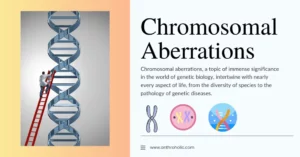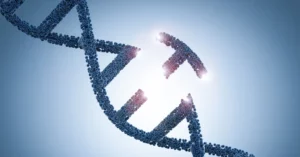AI Answer Evaluation Platform Live Now. Try Free Answer Evaluation Now
Microevolution
Microevolution is the study of small-scale changes in the genetic makeup of populations over time. It focuses on the mechanisms of evolution that operate within a species or population, such as genetic variation, natural selection, gene flow, and genetic drift.

Microevolution is the study of genetic changes that occur within a population over time. The main factors that contribute to microevolution include genetic variation, natural selection, gene flow, and genetic drift. Genetic variation arises from mutations and recombination, and can provide the raw material for evolutionary change. Natural selection occurs when certain traits provide a reproductive advantage, leading to their increase in frequency in the population over time. Gene flow refers to the movement of genes between populations, which can introduce new variation or homogenise existing variation. Genetic drift, on the other hand, refers to random fluctuations in gene frequencies, which can have significant effects on small populations or during rapid environmental change. Together, these factors contribute to the diversity of life and the evolutionary processes that shape it.
Genetic Variation
Gene variation refers to the differences in DNA sequence and gene expression between individuals within a population.
The sources of genetic variation include mutations, which are random changes in the DNA sequence that can create new alleles, and recombination, which occurs during sexual reproduction when chromosomes exchange genetic material. These processes generate the genetic diversity that provides the raw material for natural selection and evolution.
Genetic variation arises through mutations, which are random changes in the DNA sequence, and recombination, which occurs during sexual reproduction. Genetic variation provides the raw material for natural selection, the process by which certain traits become more or less common in a population depending on their fitness. Over time, natural selection can lead to adaptive evolution and the formation of new species. Genetic variation also enables populations to respond to environmental changes, disease outbreaks, and other selective pressures, which can drive microevolutionary changes within a population.
Natural Selection
Natural selection is the process by which certain traits become more or less common in a population depending on their fitness. It occurs when individuals with advantageous traits are more likely to survive and reproduce, passing on their traits to their offspring. Over time, natural selection can lead to adaptive evolution and the formation of new species.
Directional selection occurs when individuals with an extreme trait are favoured over individuals with a more average trait, leading to a shift in the mean value of the trait. An example is the increase in the size of beaks of Galapagos finches during a drought. Stabilising selection occurs when individuals with an average trait are favoured over individuals with extreme traits, maintaining the mean value of the trait. An example is the intermediate birth weight of human babies. Disruptive selection occurs when individuals with extreme traits are favoured over individuals with an average trait, leading to a bimodal distribution of the trait. An example is the divergence of male mating strategies in side-blotched lizards.
Natural selection can lead to adaptation by favouring traits that increase the fitness of individuals in a given environment. Over time, these traits can become fixed in a population, leading to the formation of new species through a process known as speciation. Speciation occurs when populations become reproductively isolated from each other, preventing gene flow and allowing for the accumulation of genetic differences.
Gene Flow
Gene flow is the movement of genes between populations through migration. It can introduce new genetic variation, homogenise existing variation, and counteract the effects of genetic drift. Gene flow is an important mechanism of microevolution that helps maintain genetic diversity within and between populations.
Gene flow can increase the genetic diversity of populations by introducing new alleles from other populations. It can also homogenise present genetic variation by diluting or replacing locally adapted alleles. Gene flow can have significant effects on the genetic structure and diversity of populations, particularly in small or isolated populations.
Examples of gene flow include the migration of birds between different continents, leading to the spread of genetic traits and adaptations across different populations. Another example is the interbreeding between human populations from different regions, resulting in the sharing of genetic variation and the formation of mixed populations.
Genetic Drift
Genetic drift is the random fluctuation of allele frequencies in a population, typically occurring in small populations. It can result in the loss of genetic variation and the fixation of alleles, leading to reduced genetic diversity over time. Genetic drift is an important mechanism of microevolution that can have significant effects on the genetic structure and evolution of populations.
The founder effect occurs when a small group of individuals colonise a new location, carrying only a subset of the genetic variation present in the original population. This can lead to reduced genetic diversity in the new population. An example is the Amish population in the United States.
The bottleneck effect occurs when a population undergoes a drastic reduction in size, leading to a loss of genetic variation due to genetic drift. An example is the northern elephant seal population, which was reduced to just 20 individuals during the 19th century.
Genetic drift can have significant effects on the genetic diversity of populations by causing the loss of alleles and the fixation of others due to random fluctuations in allele frequencies. In small populations, genetic drift can lead to the rapid loss of genetic variation, reducing the ability of populations to adapt to changing environmental conditions and increasing the risk of extinction.
Other Factors
Other factors that can contribute to microevolution:
Sexual selection can drive the evolution of traits that increase an individual’s mating success, such as elaborate courtship displays or large body size. Artificial selection, as practised in agriculture and animal breeding, can rapidly alter the genetic makeup of populations. Mutations in non-coding regions of the genome can also contribute to microevolution by affecting gene expression, splicing, and other regulatory processes.
Some other factors influencing microevolution:
- Genetic recombination
- Chromosomal aberrations
- Horizontal gene transfer
- Epigenetic modifications
- Introduce new genetic variation
- Alter the genomic structure
- Affect gene expression
- Lead to changes in the genetic makeup of populations over time
Conclusion
Microevolution is important in biology because it helps us understand how populations adapt and evolve in response to environmental changes, disease outbreaks, and other selective pressures. By studying microevolution, we can also gain insights into the origins of new species, the genetic basis of inherited traits, and the patterns of biodiversity observed in nature. Ultimately, microevolution provides a foundation for our understanding of the larger-scale processes that shape the diversity of life on Earth.
References
Futuyma, D. J. (2017). Evolution. Sinauer Associates.
Carroll, S. B. (2013). Brave new worlds: The increasing regulatory challenges of biotechnology and the emerging role of evolutionary biology. PLoS Biology, 11(5), e1001551.
Losos, J. B. (2009). Lizards in an evolutionary tree: Ecology and adaptive radiation of anoles. University of California Press.
Grant, P. R., & Grant, B. R. (2014). 40 years of evolution: Darwin’s finches on Daphne Major Island. Princeton University Press.
Endler, J. A. (1986). Natural selection in the wild. Princeton University Press.




